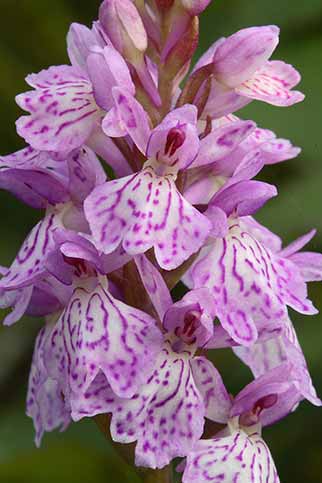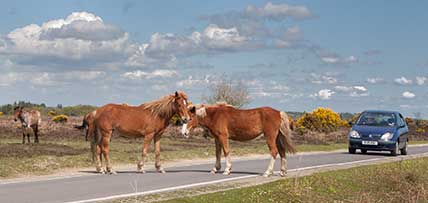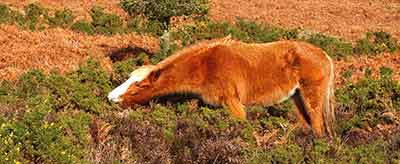New Forest orchids – an introduction

heath spotted-orchid
The New Forest is home to an impressive fifteen species of wild orchid. Some can be found in really good numbers, whilst others are scarce and occur in few locations.
Many of the orchids have conspicuous, extravagantly shaped flowers. The earliest bloom in April, whilst later species, such as autumn lady’s tresses, flower at the end of September. June, though, is the peak flowering month when the largest number of orchid species is likely to be seen, and also the most individual plants.
Life, though, is not simple in the strange, underground world of orchids, for these plants depend for their existence on quickly establishing a relationship with soil-based fungi - they have tiny seeds that contain no food reserves, so germination and early growth can only occur if seeds fall within reach of a fungal partner.
A small number of orchids are completely parasitic, that is they depend entirely on the fungi for nutrients, and lack completely the chlorophyll necessary to photosynthesise. Others require most assistance during their early life stages, whilst many continue to require significant fungal assistance.
The orchid-fungi relationship is often mutually beneficial, as in return for nutrients from the fungi, most of the orchid species provide their fungal partners with sugars. The wholly parasitic orchids, however, have not been shown to provide any reciprocal benefit to the fungi.
Perhaps surprisingly, orchid populations continue to be threatened by picking, despite it being illegal to uproot wild plants without the landowner’s permission, and despite the even greater protection enjoyed by some members of the orchid family. The best advice, of course, is to leave wild flowers alone for others to enjoy.
Many orchids in the New Forest, though, face the additional problems posed by commoners’ stock, and deer, animals that will just as readily eat or trample a beautiful orchid as they will more humble plants. Yet sufficient orchids survive to brighten the New Forest scene, and cheer and intrigue casual walker, general naturalist and specialist orchidologist alike.
Look out for the following species, but beware, identification can sometimes be a challenge, and please note that whilst the individual species pages here - the links follow - provide identification information, considerably greater detail can be found in some of the conventional wild flower guides.
Find out more about New Forest orchids
Broad-leaved helleborine (Epipactis helleborine), common twayblade (Listera ovata) and marsh helleborine (Epipactis palustris) can also be found. These plants are, however, relatively inconspicuous, scarce, thinly spread and often have extremely local distributions.
References:
Collins New Generation Guide - Wild Flowers of Britain and Northern Europe: Alastair Fitter
Wild Orchids of Hampshire and the Isle of Wight: Martin N. Jenkinson
The Flora of Hampshire: Anne Brewis, Paul Bowman and Francis Rose
Britain's orchids: David Lang
More links
Other related links
Search this site

Sadly, 58 animals were killed - 35 ponies, 13 cows, 8 donkeys and 2 sheep, whilst a further 32 were injured - 3 pigs, 9 donkeys, 11 cows and 9 ponies.
(Forty-three accidents occurred in daylight, 15 at twilight and 101 in the dark. Twenty-seven accidents were not reported by the driver involved).
Here's just one horrific example - Three donkeys killed in collision with van at notorious New Forest blackspot (Advertiser and Times)

